Inside the ultra-elite Explorers Club that counts Elon Musk, Jeff Bezos, and James Cameron as members
The Explorers Club is located on East 70th Street in Manhattan near Central Park. The house's Jacobean facade makes it instantly recognizable.

The Explorers Club headquarters was originally the home of Stephen C. Clark, the heir to the Singer Sewing Machine fortune and founder of the Baseball Hall of Fame. Club member and famous writer Lowell Thomas later bought the house and gifted the property to the club.
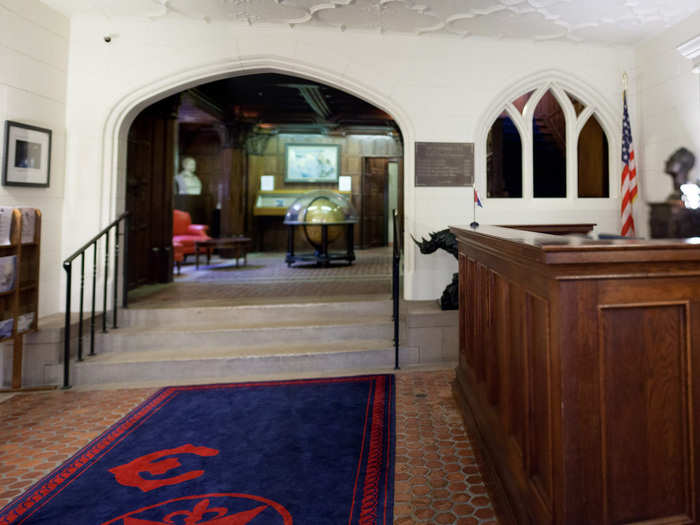
The front sitting room is suffused with history, including many 15th- and 16th-century fixtures from Europe. The wood coffee table was originally a hatch cover on the USC&GS Explorer, a survey ship and research vessel that was one of the few ships to survive the 1941 Pearl Harbor attack.
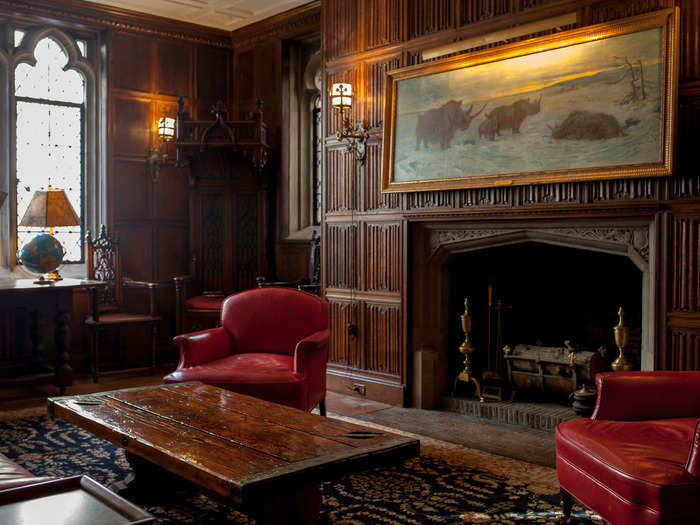
This is the Empress Dowager chair, which belonged to Empress Wanrong, the wife of Puyi, the last emperor of China and the final ruler of the Qing Dynasty.
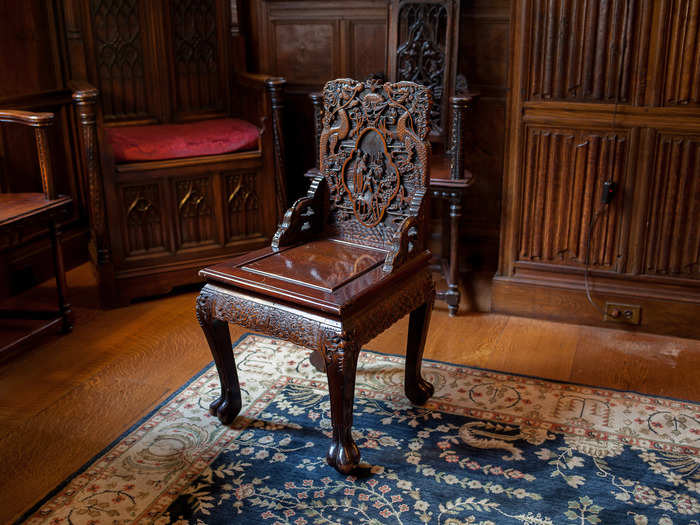
The club has numerous artifacts from Robert Peary's landmark expedition to the North Pole in 1909, including the sealskin mittens of Matthew Henson, Peary's first mate and the first African-American admitted to the Club in 1937. This is canned malted milk from the expedition.
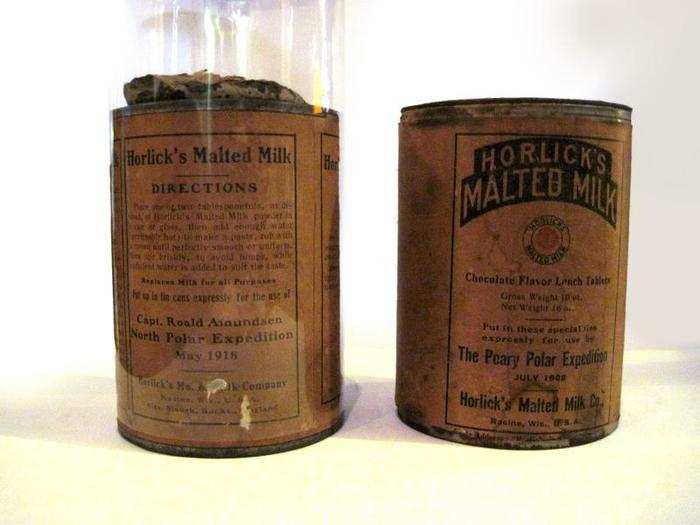
Norwegian explorer Thor Heyerdahl used this globe to plan his expedition to sail an indigenous balsa-wood raft from Peru to Polynesia. Heyerdahl received invaluable financial support from club members. While the club has a paltry $125,000 fund for actual expeditions, its real purpose lies in connecting those with means with explorers.
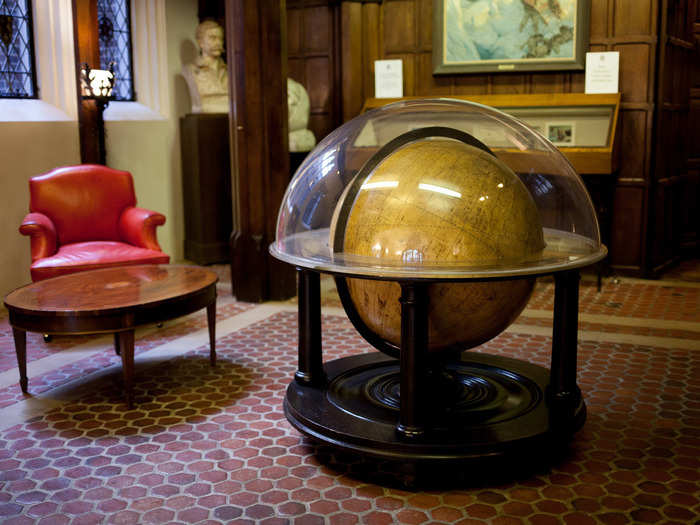
Heyerdahl wanted his expedition to prove indigenous peoples could have crossed the Pacific before the arrival of Europeans and settled on Polynesian islands. The team landed after a 101-day journey that crossed 4,300 miles. This is a page from Heyerdahl's diary on the day they found land.
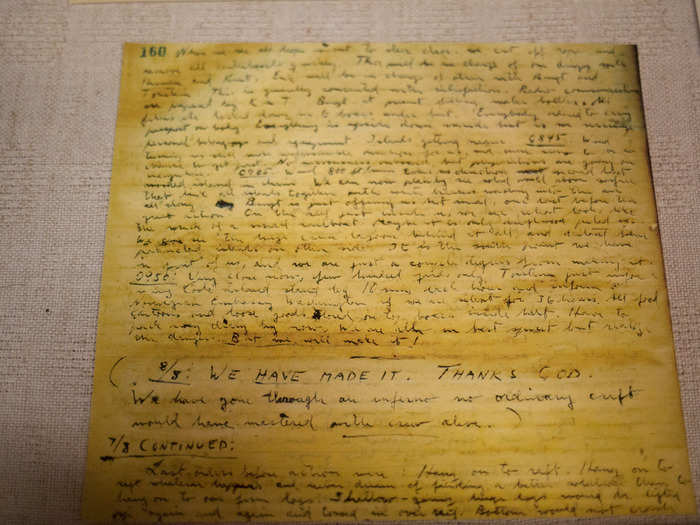
The townhouse has an ancient elevator. We headed in to check out where the club's 3,000 members usually meet.
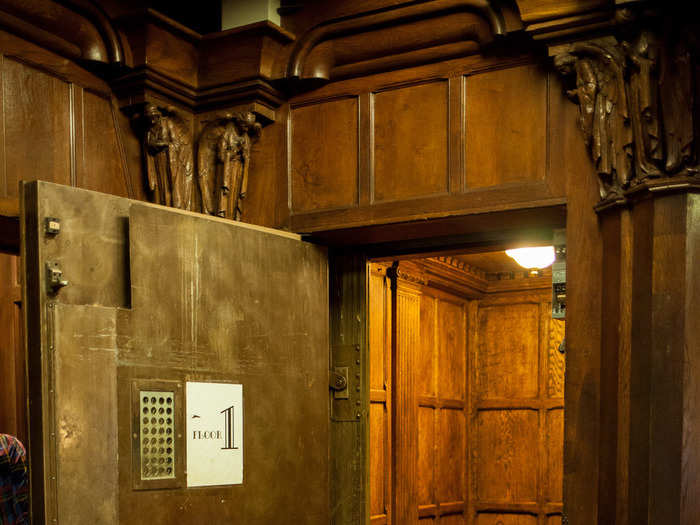
This is one of two main event rooms in the building. It was once Clarke's library and has retained that character. The ceiling comes from an Italian monastery.
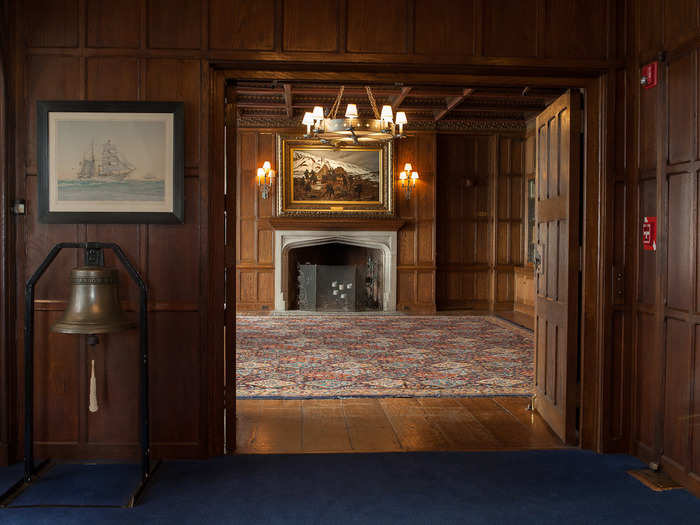
The club is frequently used for talks and conferences where explorers present their findings. Here, marine investigator Barry Clifford talks about a 500-year-old shipwreck found off the coast of Haiti that he believes could be one of Christopher Columbus's ships.
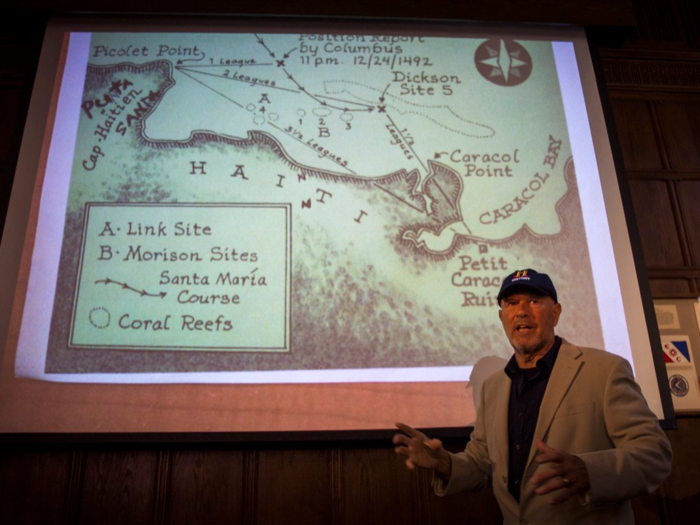
This is a painting of Adolphus W. Greely, The Explorers Club's first president. It depicts Greely's 1881 expedition to the Arctic, during which ice stranded the explorers for several years (18 of the 24 crew members had died of various causes by the time they were rescued in 1884). Rumors that some crew members engaged in cannibalism haunted Greely.
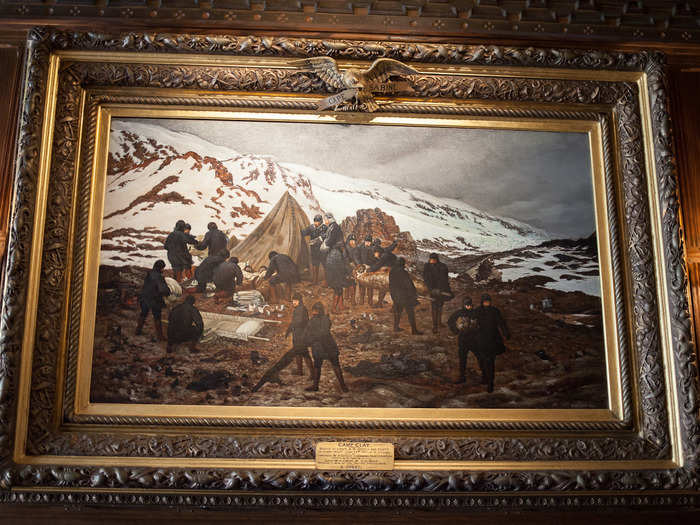
This taxidermy polar bear is a favorite attraction. It was a gift from actor Rudolph Valentino, who hunted the animal on the Chukchi Sea in 1969. Press a button and the bear roars.
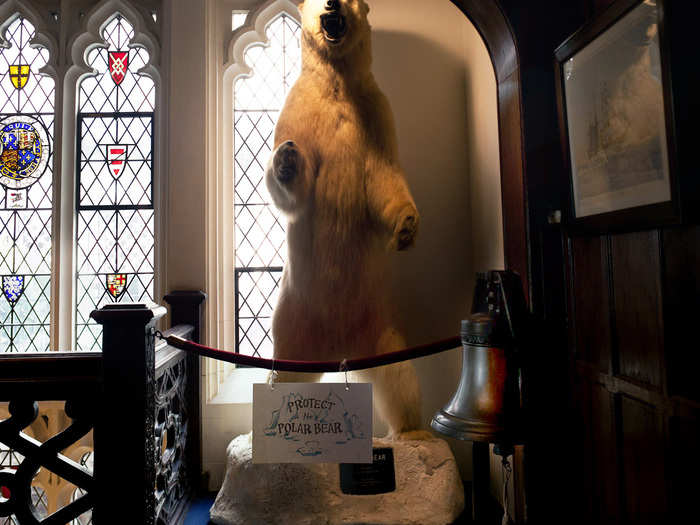
This porch on the side of the main event space is stunning. The balustrade on the side was imported from a 15th-century French monastery in the Pyrenees.

Stones on the patio are dedicated to members. The average age of the club's 3,000 members is 65, according to Outside Magazine. Not all are scientists, mountaineers, and astronauts; many are simply wealthy travelers.
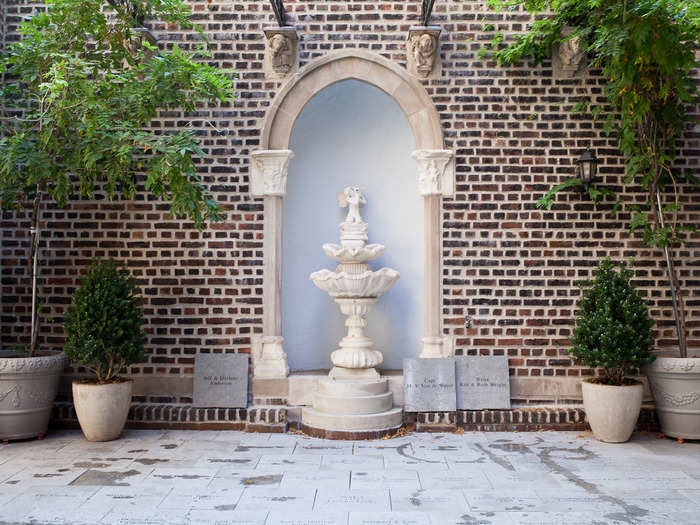
Source: Outside Magazine
Space-X and Tesla CEO Elon Musk has long been a member of the club. In 2014, the club awarded him the President's Award for Exploration and Technology for "revolutionizing both space exploration and sustainable transportation."

Source: The Explorers Club
The Clark Room is the main meeting room of the club. The Explorers Club maintains 26 chapters (19 in the US, 7 abroad). To become a member, you have to have been involved in field scientific research and have the recommendation of a current member.
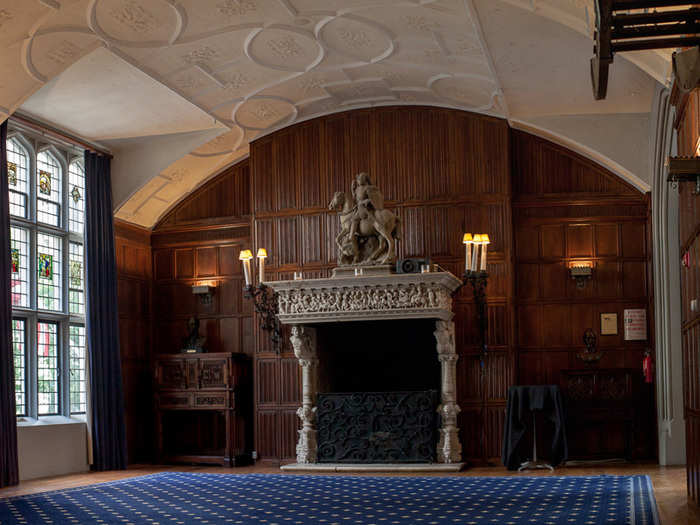
These flags are extremely important to the club's tradition. Club members who go on expedition apply to carry an Explorers Club flag with them to their destination. In order to do so, they must submit a mini-thesis with the goal of their expedition.
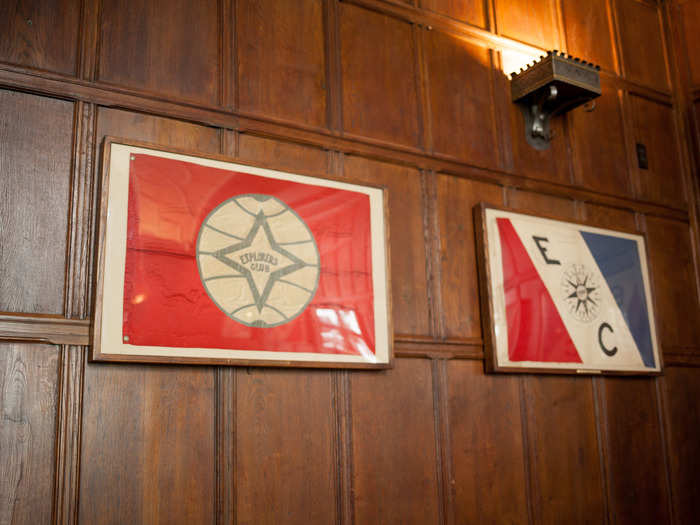
Explorers on the world's major expeditions have carried these flags: to the top of Mount Everest, the North and South Poles, and the moon. The club has a high-profile relationship with NASA. Neil Armstrong and Buzz Aldrin carried this miniature flag of The Explorers Club with them to the moon, and it's been carried on many Apollo missions.
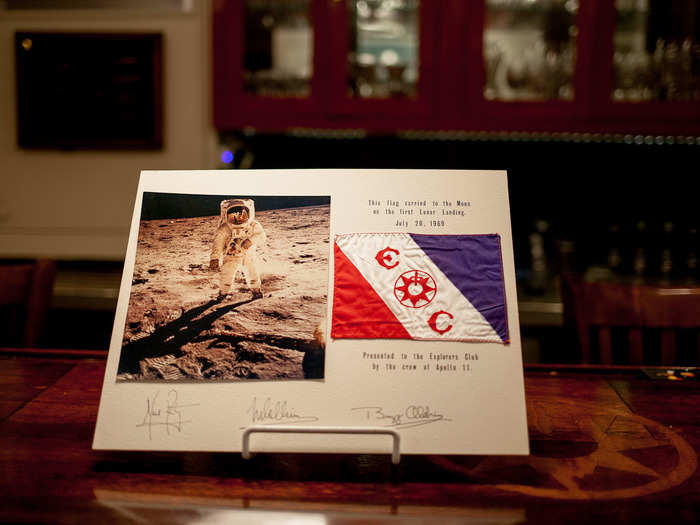
Flags often go on multiple expeditions. This flag, a veteran of 19 expeditions, has been both to the highest point in the world (Everest) and the lowest (Challenger Deep).

Jef Bezos, Amazon CEO and founder of space company Blue Origin, recently became a member. He led an expedition in 2013 to recover the F-1 rocket engines that were used in the '60s-era Apollo space missions from the bottom of the ocean. For the effort, he took an Explorers Club flag, which he returned in 2014.

Source: Explorers Club
There are relics of past expeditions everywhere. Robert Peary and Matthew Henson carried this massive sleigh during their expedition to the North Pole.
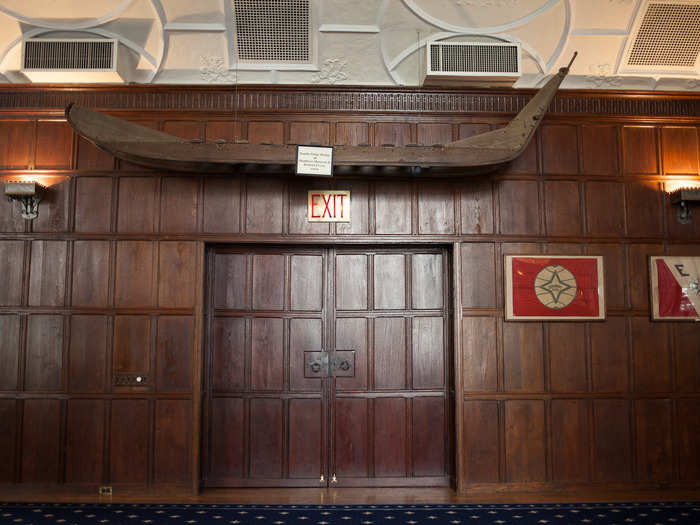
The Club also maintains a full archive of every member as well as every flag expedition undertaken by a club member.
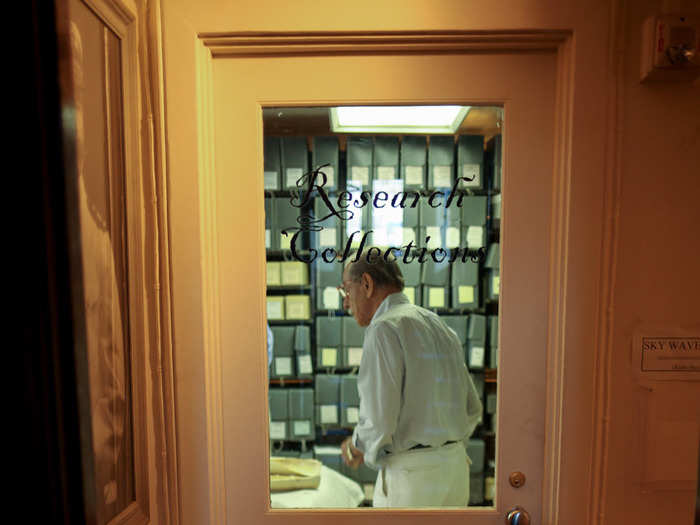
Each member has a file in the archives containing their application, flag reports, news clips, photos, and artifacts they brought back. This is the file of Carl Akeley, the father of modern taxidermy.
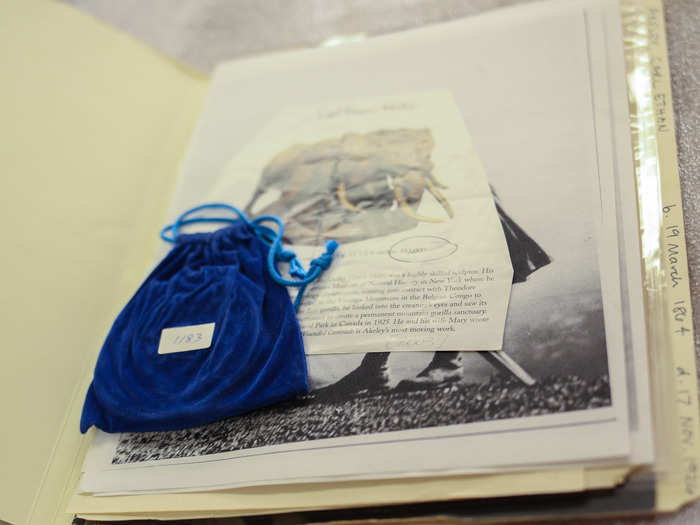
"When members are living, they are in the membership office. When they die, they come up here to live with me in the archives," Club curator Lacey Flint told Business Insider.
This is Teddy Roosevelt's application. By the time the Explorers Club was founded in 1904, Roosevelt was already president.
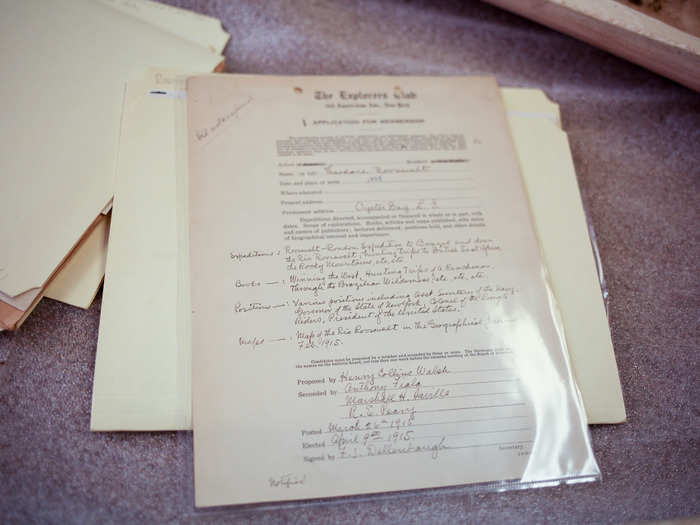
The Club's archives contain a massive collection of photographs from expeditions. In the early 1900s, slide photographs were used to present expeditions back home. This photograph of Teddy Roosevelt shows him and his son Kermit (also a Club member; standing on the elephant) during one a hunting expedition in Africa.
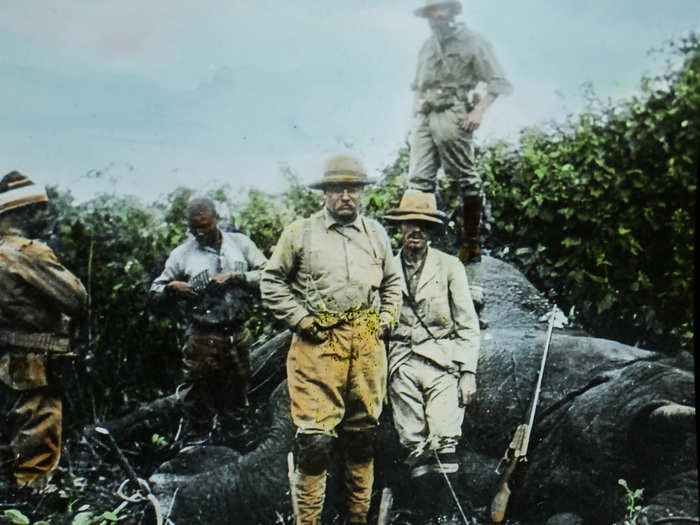
The Explorers Club is also home to an extensive collection of rare books, many of which date to the early 1800s.

The Hall of Fame upstairs is filled with the club's most notable members.
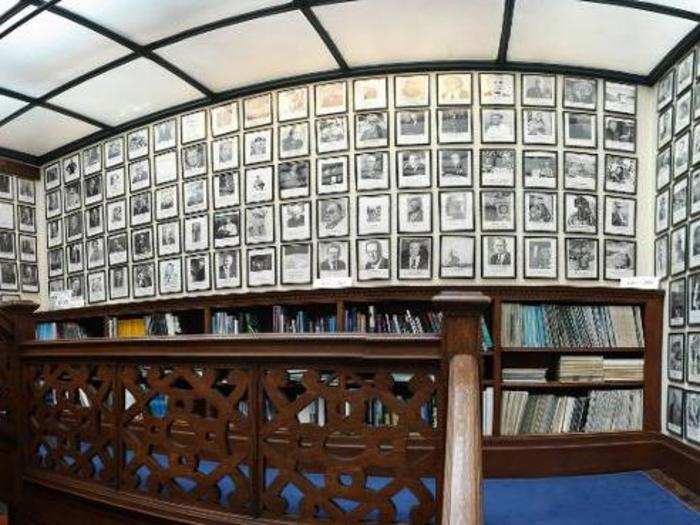
The Hall of Fame leads to the trophy room, which is filled with artifacts taken while on expedition — including many exotic taxidermy animals.
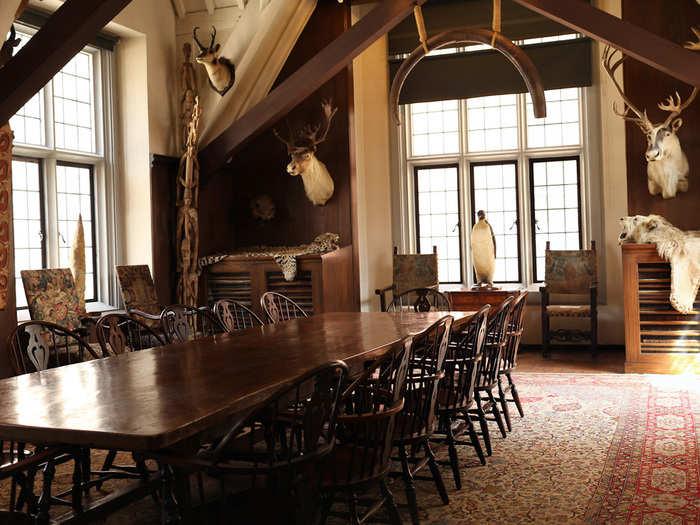
Next to the door you can see the long front tooth of a narwhal, which looks like a tusk.
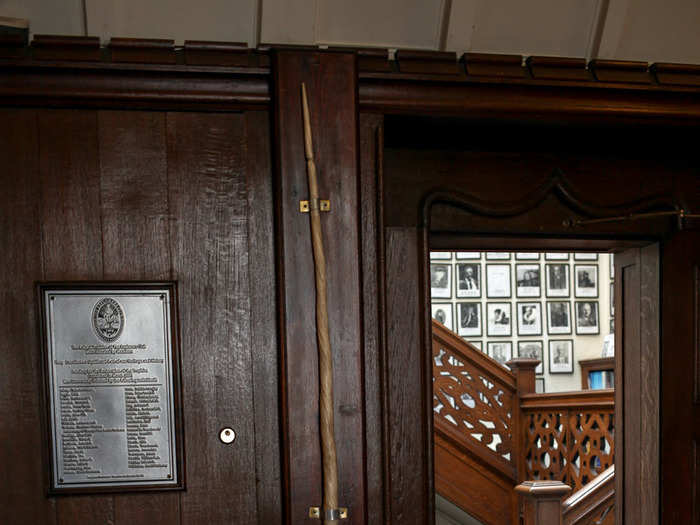
These are from a rare four-tusked elephant, the result of a genetic mutation. Armand Denis, a Belgian-born documentary filmmaker and club member, collected the tusks.
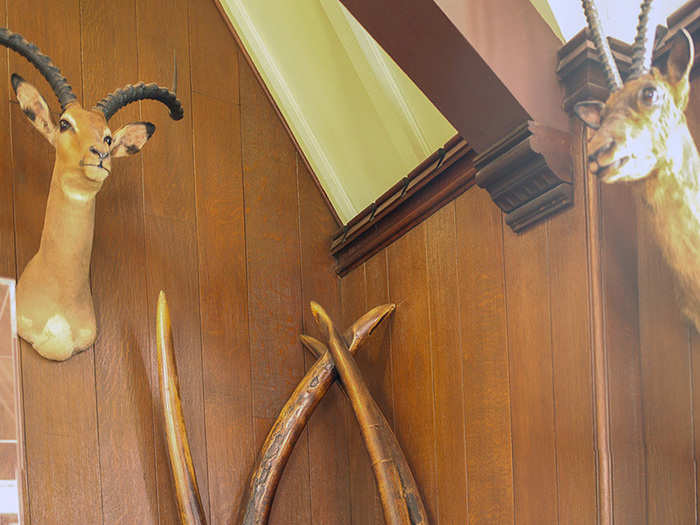
Here's the tusk of a 250,000-year-old woolly mammoth the club served at its annual dinner in 1951. Reverend Bernard Hubbard, a reputed explorer but not a club member, provided the meat.

The club is known for serving exotic foods at its annual dinners. In recent years, dishes have included whole cooked alligators, tarantulas, goats' eyeballs, maggots, and earthworms. Tickets for the event run from $375 to $1,200. About 1,400 people usually attend.
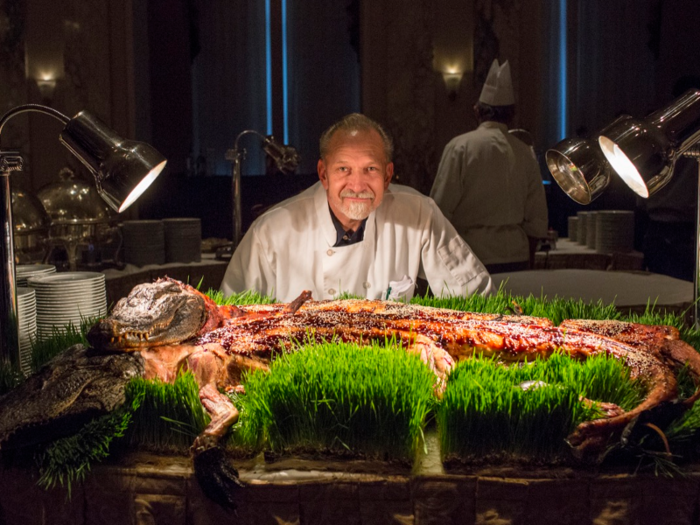
Here's a portrait of Danish explorer Peter Freuchen, who was stranded in a blizzard on Baffin Island in Canada in 1923.
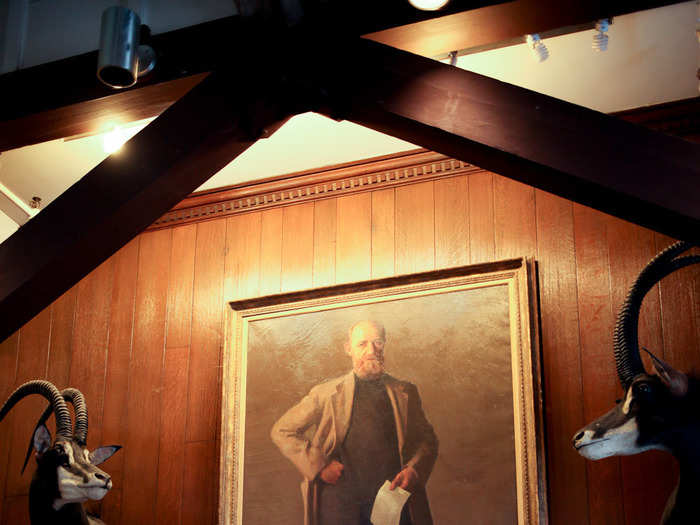
Freuchen was buried by an avalanche and suffered severe frostbite on his foot. Remembering that natives use frozen dog feces to make tools, Freuchen quickly moved his own bowels, froze the feces, and crafted a chisel to dig his way out.
On the way back to camp, he was saved by Inuits who told him to bite off his frostbitten toes. He instead knocked them off with a hammer.
Between these chairs sits the stuffed penis of a sperm whale that was given to the club in 1977.
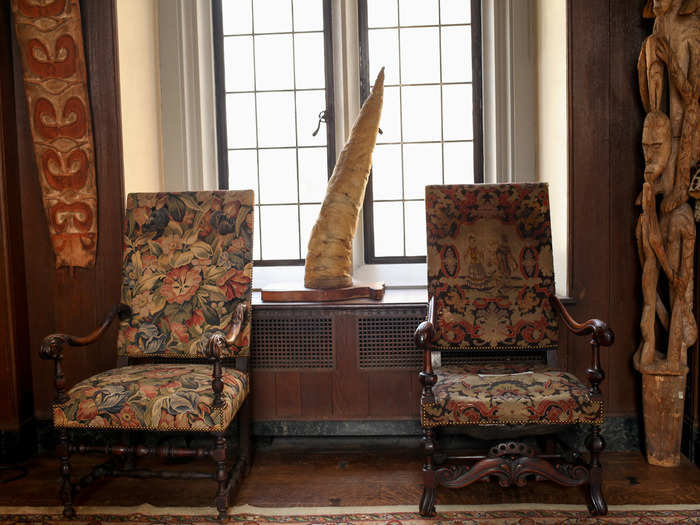
Teddy Roosevelt shot this lion on one of his many expeditions to Africa.
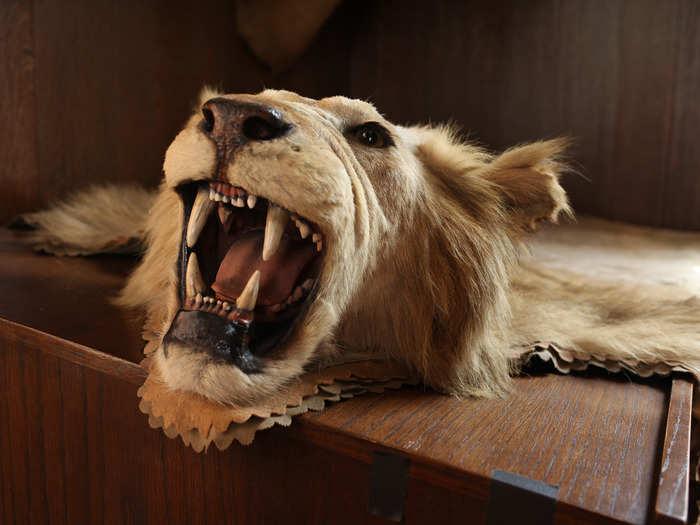
While the club used to have a reputation as big-game hunters (note all the taxidermy in the house), it has since aimed to distance itself from that part of its past. The club has moved towards championing environmentalism and conservation.
Popular Right Now
Popular Keywords
Advertisement